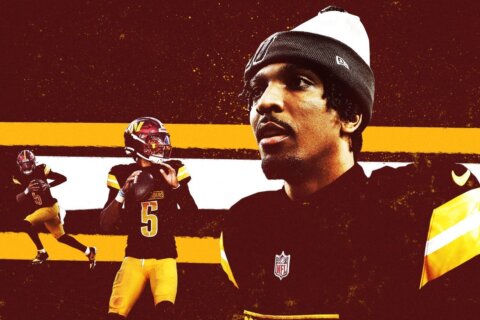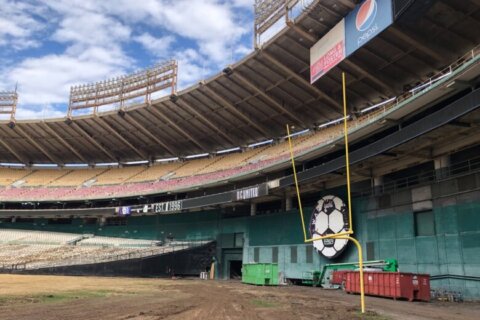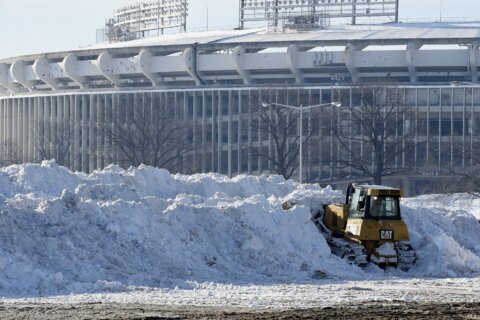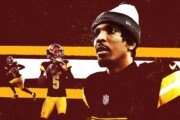WACO, Texas — Before Baylor football was a national powerhouse, before its offense was a blur of green-and-gold flashes crushing the souls of defensive coordinators around the Southwest, it was the laughingstock of the Big 12 Conference.
Baylor joined the Big 12 in 1996 and posted losing records in each of its first 14 seasons. The Bears compiled a 40-117 record, including a dismal 14-98 tally against Big 12 competition, never finishing better than tied for last in the South Division. The penultimate season in that stretch, though, featured a promising true freshman quarterback named Robert Griffin III, who would win Big 12 Conference Offensive Freshman of the Year honors.
Griffin’s decision to attend Baylor began with his recruitment by Art Briles, then the head coach at the University of Houston. Briles had been one of the state’s premier high school coaches, winning four state titles with Stephenville before jumping to the college ranks. He had turned the Houston program around and was lured to Waco to do the same.
When Briles took the Baylor job, he brought Griffin with him. And with Griffin came not just the talent, but the mindset of the type of player Briles wanted guiding his new, different brand of Baylor football.
“It was all about changing the expectation,” explained Griffin. “Losing was acceptable and he changed that.”
Griffin’s presence had an immediate impact, as excitement built around his freshman campaign with hope for better results on the field the next season. But 4-8 wasn’t good enough. “We didn’t get the sense after that season that we had accomplished anything,” said Griffin.
With a chance to build on that in 2009, Griffin tore his ACL in the third game of his sophomore season, and the Bears finished 4-8, 1-7 in conference.
Then, in 2010, a healthy Griffin and the Bears took their first true step forward, notching the program’s first winning season since the mid-’90s. Baylor found itself ranked, and went into Austin in late October, knocking off Texas, 30-22, to move to 7-2 on the season and 4-1 in conference. But they stumbled down the stretch, losing their final three regular season games before getting blown out by Illinois, 38-14, in the Texas Bowl.
It wasn’t until 2011, both Griffin’s and Briles’ fourth year on campus, that Baylor truly arrived and announced their intention to stay as a college football powerhouse. But it was four years before that, after Griffin had committed to Briles at the University of Houston, his former job, then followed him when he moved to Waco, that the seed was planted for everything that would grow into what it is today.
“When I got there, Coach Briles said, ‘I believe you can win the Heisman and that within a few years, we’ll have an on-campus football stadium,'” recalled Griffin.
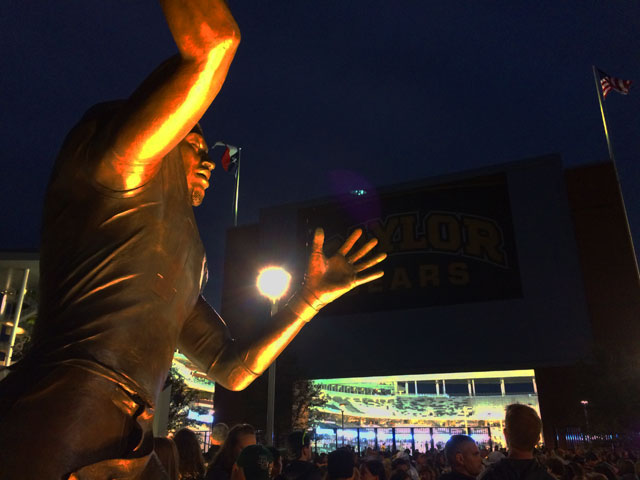
“It’s one of the greatest transformations in the history of college football,” said Baylor Athletic Director Ian McCaw. “One of the biggest parts of that was Robert.”
Now in their seventh season under Briles, the Bears have won 50 games, 19 more than they did in 11 seasons under the three coaches that preceded him. And while the school’s continued success after Griffin’s departure has brought the appropriate credit to Briles for building a sustainable winner, Griffin remains the face most commonly associated with Baylor football outside of Texas.
That’s why, as you cross the Brazos River from campus over the footbridge to the open edge of the brand-new, horseshoe-shaped McLane Stadium, a statue of Griffin greets you.
“Robert came along at the perfect time, when we really needed a leader on the field to transform the program,” said McCaw. “Even more so as an ambassador for the football program and the university.”
Griffin sported a 3.7 GPA during his time at Baylor, which saw its student-athletes combine for a 3.26 mark last year. His success on the football field led him to be selected second overall in the NFL Draft, but in Waco, his charisma and talent as a public speaker have made him beloved beyond his football skills.
Without Griffin’s success in 2011, guiding Briles’ program to its best year yet, there is no statue in front of McLane Stadium, because there is no McLane Stadium.
“The momentum for the stadium really began with Robert winning the Heisman and the team winning the Alamo Bowl later in the month,” said McCaw. “It really was the catalyst for our fundraising efforts.”
The 41,540-capacity, $266 million jewel opened this year, becoming the Bears’ new football home after 64 years at Floyd Casey Stadium. While Floyd Casey served its purpose, it showed its age and was rarely filled to capacity, despite holding just 50,000 fans, compared with more than 82,000 in Norman or more than 100,000 in Austin. It was more than a mile from the far edge of campus, making it harder for students to get to. The team on the field had finally put Baylor on the map, and Griffin’s success had led the university’s donors to erect a proper, on-campus home for a program on the rise, to help showcase the Bears for their marquee matchups.
“I saw the joy and excitement of everybody there,” said Griffin, who was able to attend the opening game at the new stadium. “That’s truly special. The crowd used to be half burnt orange [for Texas] and red [for Oklahoma]. It’s all green and gold now.”
To date, none of those games has been bigger than the one Saturday night, as rival and ninth-ranked TCU came to town to face Baylor, who found itself ranked in the Top 5 in the country for the first time ever.
And while there was a section of purple-clad TCU faithful occupying a handful of sections of the third deck above the north end zone on Saturday, you wouldn’t have known it from the frenzied sea of green and gold that would flush onto the field later that night.
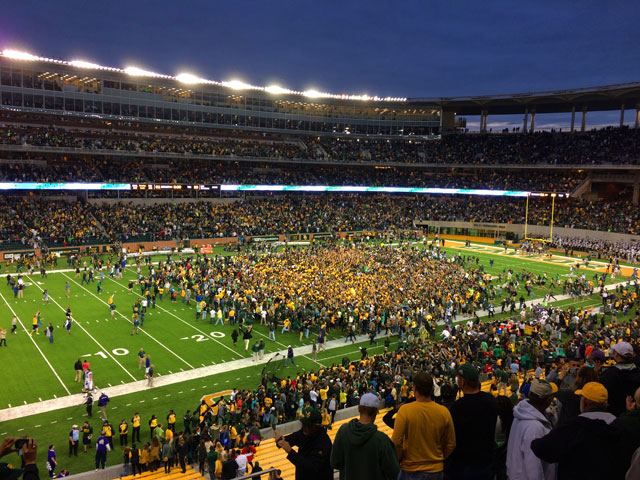
“Well, this is the game of the week in the state of Texas,” said McCaw, a thinly-veiled nudge at the traditionally larger rivalry taking place upstate between the University of Texas and Oklahoma. “Typically that’s reserved for the Red River Rivalry. The fact that Baylor-TCU is overshadowing that is remarkable.”
Not only was the matchup more significant in both the Big 12 and the nation, the excitement of the game itself easily trumped what took place at the Cotton Bowl earlier Saturday afternoon. While Oklahoma hung on to a 31-26 victory that appeared closer than it really was, Baylor and TCU combined for an instant classic of a shootout on the banks of the Brazos.
In a way, the game echoed the program’s rise and the decades of failure that lead many to question its current success. Baylor failed to score on its first possession, fumbled on its second, and found itself down 14-0 in the opening minutes of the game. The Bears trailed the entire game save for a brief moment shortly before halftime, when a K.D. Cannon touchdown catch tied it at 24-24. But TCU ran the ensuing kickoff back 94 yards to push in front again, and would lead by the same margin going into the fourth quarter.
Down multiple scores in the second half, a promotion runs on the sparkling new video board, during one of the achingly long television breaks that stretched the game out to 4 1/2 hours. The ad highlighted the item of the week at the Baylor Book Store: a kelly green T-shirt with a cartoon Bruiser Bear mascot head on the front and a number 10 on the back, under Griffin’s name.
With 11:38 left, down 14, current Heisman Trophy candidate Bryce Petty failed to identify a linebacker over the middle and threw a pick-six, a seemingly backbreaking play that put TCU up 58-37, the season’s hopes and dreams pushed to the brink. But the Bears played a near-perfect game for the next seven minutes, twice stopping the Horned Frogs three and out in between three touchdowns, pulling level once again.
Even then, Baylor never led until the game’s final snap. That’s when a freshman kicker — the new kid on the block of the new powerhouse in college football, and just 1-for-6 on field goals in his college career coming into the game — booted the Bears to a 61-58 victory and kept the dream of a national title alive.
That dream would have been universally laughed at 10 years ago, and could only have been visible at the furthest reaches of Briles’ or Griffin’s imagination when the two joined forces in 2008. You’d never know it from the waves of delirious bodies spilling out past the enshrinement of Baylor’s golden boy, out into the Texas night.

